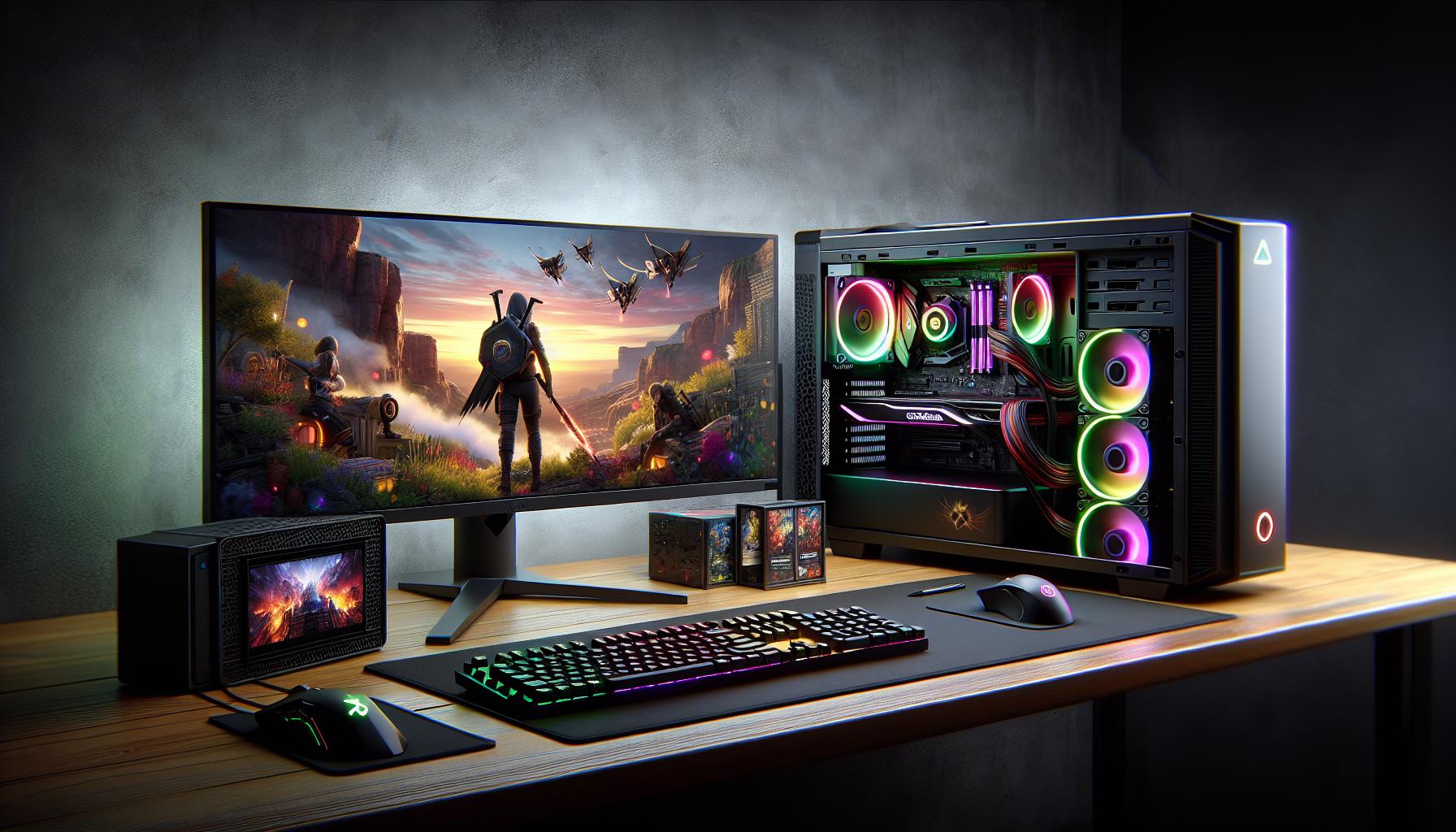Introduction
In the ever-evolving world of PC gaming, more and more gamers are turning to Linux-based systems to achieve not just competence but excellence. As the gaming-ecosystem matures, the notion of “set it and forget it” no longer applies—fine-tuning and targeted optimization unlock the real potential of your rig. That’s where the concept of tech hacks pblinuxgaming comes into play: a thoughtful, methodical suite of tweaks aimed at elevating performance, compatibility and responsiveness within a Linux gaming environment. By adopting these techniques, you can make your Linux setup not an afterthought but a competitive platform.
Below we’ll explore a variety of practical strategies under the umbrella of tech hacks pblinuxgaming—from system fundamentals to advanced kernel and driver techniques—so whether you’re just getting your first distro for gaming or you’re a seasoned Linux-user looking to squeeze every last frame, you’ll find value here.
1. Establishing a Solid Foundation
Before diving into the more exotic tweaks, it’s critical to get the basics right. The strongest tech hacks pblinuxgaming emerge from a system that’s clean, up-to-date and tailored for gaming.
Choose the right distribution: Pick a Linux distro that supports up-to-date graphics drivers, offers a gaming-friendly kernel and has a community around gaming—think of options like Pop!_OS, Manjaro or a gaming-centric variant. The right base ensures fewer surprises later.
Update your drivers and kernel: Modern GPU drivers (whether you’re using NVIDIA, AMD or Intel) matter for frame-rate, latency and compatibility. Similarly, a well-chosen kernel (perhaps a low-latency variant) forms a key component of high-performance gaming. Making sure both graphics stack and kernel are current sets you up for success.
Baseline performance measurement: Before applying tweaks, test your system. Record FPS in your favorite game, note CPU/GPU utilization, memory usage and system responsiveness. This baseline lets you quantify the effects of the upcoming tech hacks pblinuxgaming.
2. System-Level Tweaks for Enhanced Performance
Now that your foundation is solid, we move into system-level adjustments often cited among effective tech hacks pblinuxgaming.
Swappiness and memory management: Swappiness governs how aggressively Linux uses swap space. Lowering it (e.g., vm.swappiness=10) means the system prefers RAM over swapping, which reduces stutters in gaming sessions. One reference underscores this method as part of tech hacks pblinuxgaming workflows.
Kernel tweaks and huge pages: Using large memory pages (hugepages) and installing kernels optimized for low latency can reduce input lag and improve frame-time consistency. As noted in one guide: setting vm.nr_hugepages=2048 and installing a low-latency kernel gives measurable gains.
Background services and resource prioritization: Disable or stop non-essential services (Bluetooth daemons, printer queues, etc.) when gaming. Use tools such as GameMode from Feral Interactive which can adjust CPU governor, I/O priority and scheduling to favour your game—one of the core components of tech hacks pblinuxgaming.
3. Graphics Stack & Compatibility Layers
Once your system is aligned, the next frontier is the graphics pipeline and game-compatibility layers—areas where many of the more advanced tech hacks pblinuxgaming yield major dividends.
GPU settings and driver tuning:
-
For NVIDIA: Use tools like
nvidia-settingsor the third-party GreenWithEnvy to monitor temperatures, adjust fan curves, set power limits and even overclock within safe margins. -
For AMD:
CoreCtrlandradeon-profilelet you adjust clock speeds, manage thermal behaviours and switch performance profiles.
Distributions optimized for gaming often allow disabling V-Sync or enabling “Maximum Performance” modes in driver settings—both part of savvy tech hacks pblinuxgaming.
Running Windows games: Proton, Wine & Proton GE
Most gamers transitioning from Windows will appreciate compatibility layers:
-
The Proton tool (via Steam Play) lets you run many Windows titles.
-
The community-enhanced Proton GE build (by Glorious Eggroll) includes additional patches, better anti-cheat support and extra performance tweaks. Many tech hacks pblinuxgaming guides cite Proton GE as critical for smoother gameplay in hybrid Windows-on-Linux environments.
You might also set environment variables (e.g.,PROTON_NO_ESYNC=1,PROTON_NO_FSYNC=1) for titles that stutter or crash.
Visual enhancements with shader layers:
Engaging tools like vkBasalt allow Vulkan games (and games via Proton) to add bloom, FXAA, HDR and other post-processing filters with minimal frame-rate cost. This is highlighted in tech hacks pblinuxgaming content as a way to enhance visuals without sacrificing performance. Editorialge+1
4. Input, Audio & Network Optimizations
Performance isn’t just about framerate—it’s also about latency, responsiveness and the “feel” of the game. Good tech hacks pblinuxgaming address these axes.
Controller and input tuning:
Steam Input supports remapping and tuning for many controllers. For more advanced setups:
-
On Linux you may use
xpadneofor Xbox controllers,ds4drvfor DualShock, orantimicroXfor generic devices. -
Some guides recommend setting USB polling rate or adding udev rules to reduce input lag and ensure reliable hot-plug behaviour. These techniques show up in the advanced sections of tech hacks pblinuxgaming material.
Audio latency and sound stack tweaks:
Audio lag or stutter can degrade immersion. Configuring low-latency audio profiles, using JACK/pipewire appropriately, and ensuring game audio uses efficient drivers (rather than heavy legacy layers) all contribute to smoother overall performance.
Network and online gaming tweaks:
For multiplayer titles, latency matters. In Linux gaming, reducing kernel tick jitter, disabling unnecessary services and ensuring your network card uses the optimal driver all help. Also be aware: the anti-cheat compatibility on Linux is still maturing. Tools like the database at AreWeAntiCheatYet document which games work reliably with anti-cheat on Linux. Incorporating these checks is part of savvy tech hacks pblinuxgaming.
5. Troubleshooting & Maintenance: Keeping Your Setup Healthy
No setup remains optimal forever. Good tech hacks pblinuxgaming include maintenance, monitoring and updates.
Monitoring and performance overlays:
Tools such as MangoHud let you track FPS, GPU/CPU usage, temperatures and frame-times in real time. Many tech hacks pblinuxgaming resources emphasise using such overlays to identify bottlenecks rather than chasing blind tweaks.
System updates and rollback strategy:
While staying current is good, gaming rigs benefit from stability. Before applying a major driver or kernel update, create a backup or snapshot (e.g., via Timeshift). That way, if a new version breaks your gaming system, you can roll back quickly. This kind of safe-guarding is part of responsible tech hacks pblinuxgaming.
Community support and resources:
The Linux gaming community is a gold mine of insights: forums like r/linux_gaming on Reddit mention specific tweaks, kernel/driver quirks and game-specific fixes. Engaging with other users allows you to adapt your own tech hacks pblinuxgaming strategy intelligently.
Conclusion
The phrase tech hacks pblinuxgaming may sound like a catch-phrase, but when applied systematically it transforms your gaming environment from “just fine” to “smooth, responsive and tailor-fitted for excellence.” Whether you’re tweaking your kernel, refining GPU settings, optimizing input and network latency or harnessing compatibility layers for Windows games, each piece contributes meaningfully.
If you take anything away from this article, let it be this: gaming on Linux isn’t about compromises—but about unleashing your hardware and software stack to its fullest potential. Embrace the mindset of fine-tuning and gradual improvement. Your rig, your distro, your game —the better you align them, the more the gaming experience rewards you. So go ahead: apply these tech hacks pblinuxgaming, experiment responsibly, and enjoy every frame.




